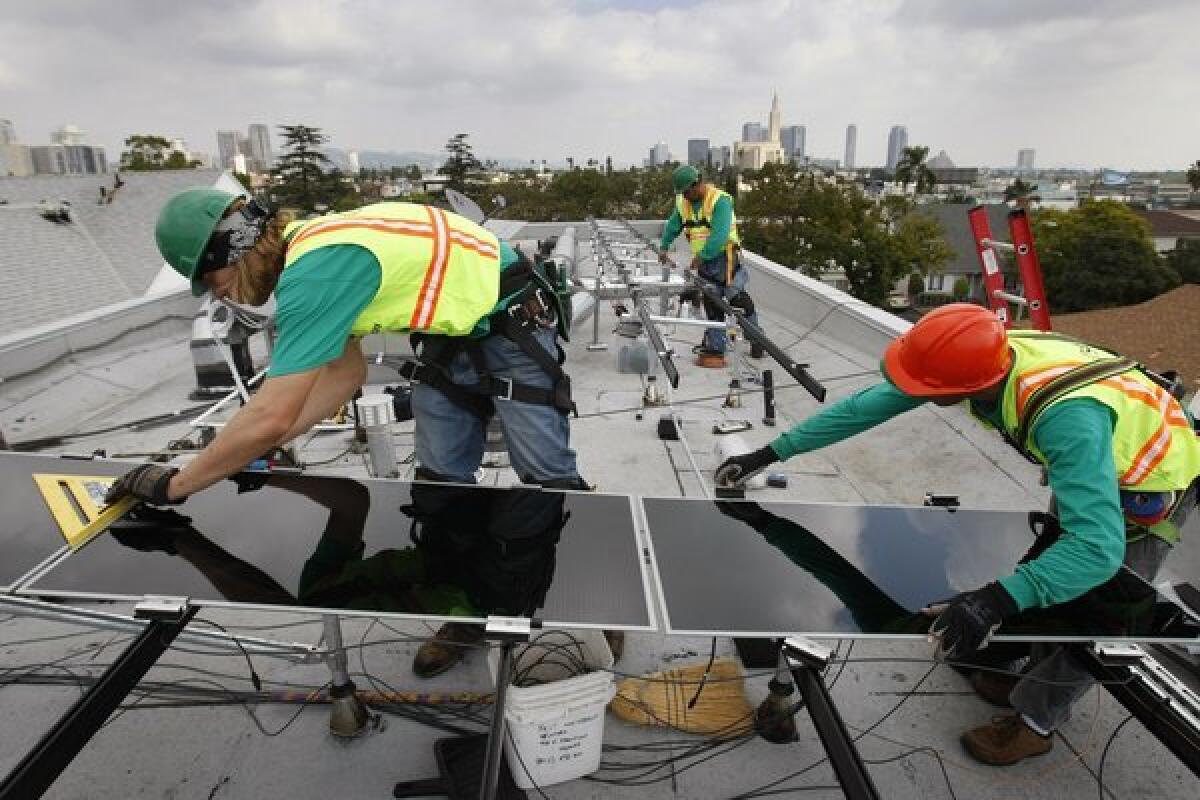SolarCity pegs IPO at $13 to $15 a share, or up to $151 million

SolarCity Corp., a Bay Area solar energy company, is looking to raise as much as $151 million in its initial public offering, widely considered to be the most anticipated renewable-power IPO coming down the pike.
The San Mateo business – which helps residential, commercial and government customers including Wal-Mart, eBay and the U.S. military set up solar power-generating systems – said it expects its shares to price between $13 and $15 each.
The company is selling 10 million shares, and current shareholders are offering 65,012 shares, SolarCity said in an amended filing with the Securities and Exchange Commission. The company expects its stock to trade under the SCTY ticker on Nasdaq.
Quiz: How much do you know about California’s economy?
SolarCity describes its business as selling renewable energy to power consumers at prices below utility rates – or roughly 15 cents per kilowatt hour on average. After customers sign multidecade contracts, SolarCity handles the entire process from permitting through installation with limited upfront charges, the company said.
Brothers Lyndon and Peter Rive founded the company in 2006. Their cousin, Tesla Motors and SpaceEx boss Elon Musk, is chairman.
SolarCity operates in 14 states and plans to expand internationally. It has raised $1.57 billion from backers such as Google, PG&E Corp. and U.S. Bancorp.
The company hopes to take advantage of rising energy prices – a trend that Lawrence Berkeley National Laboratory predicts will cause the U.S. energy-efficiency service sector to grow more than four-fold from 2008 to 2020.
ALSO:
Solar power plants burden the counties that host them
SolarCity sees bright future for residential solar systems
Federal plan designed to create large solar energy plants
More to Read
Inside the business of entertainment
The Wide Shot brings you news, analysis and insights on everything from streaming wars to production — and what it all means for the future.
You may occasionally receive promotional content from the Los Angeles Times.










